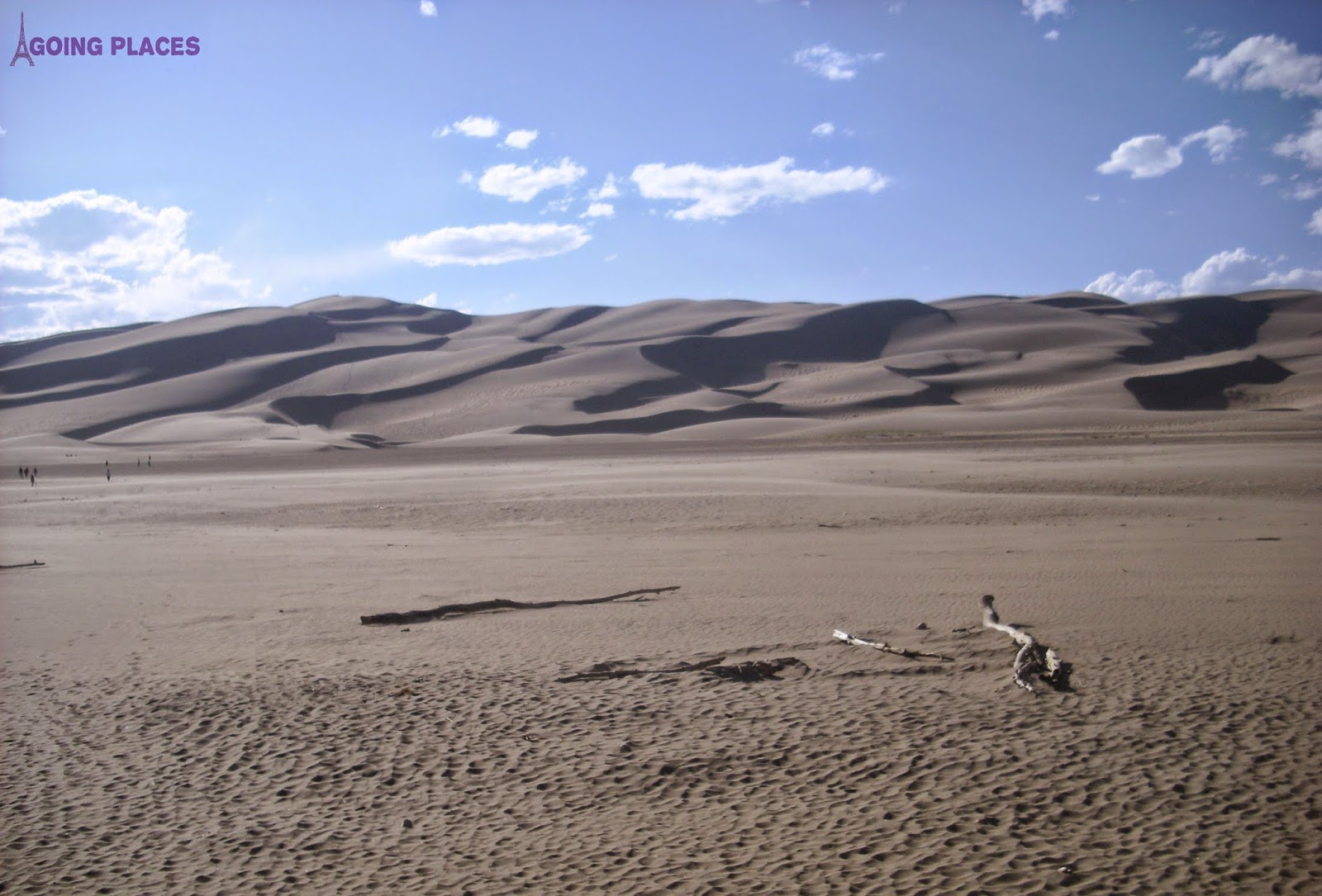One of the most interesting and unusual national parks is Great Sand Dunes National Park. Located in Alamosa and Saguache counties, Colorado, the park is definitely worth seeing. As you would expect, it is far from civilization, though there is a restaurant on the road just before the park if you get hungry. It is called the Oasis and seems to me to be part of the experience. I remember eating there, at least, which is more than I can say for a lot of places I've eaten on vacation.
The dunes are huge, which you don't really fully realize until you try to walk around. I had visions of walking at the very top of the dunes, but I never made anywhere near that far. It is super hard work (and great exercise) walking on even the flat part at the edge.
It looks like it isn't far from the deck entrance to the hills of the dunes, but when you start walking it you realize that the distance is much larger than it appears. I probably didn't even get halfway across the flat part before I was exhausted and gave up! If you are more athletic than I am, you can hike across the top.
The dunes are about 750 feet high and very, very old. Every day they look different as the sand is blown around by the wind. While scientists are still learning about the dunes, it is generally accepted that much of the sand comes from ancient lakes that used to be in the valley. Wind then blew this sand into the area it is in now, which is kind of a natural pocket in the surrounding mountain passes. Opposing winds also blow the sand the other way, which creates the hill like parts. You can read more (and see some helpful graphics) here.
Human history at the dunes also goes back a long way. Native Americans have known about the dunes for hundreds of years, at least, with several tribes using the area for camping, hunting, and gathering. The Spanish explorer Don Diego de Vargas passed through the area in 1694. The first written mention of the dunes was in Zebulon Pike's journals in 1807. As more people moved west, homesteaders began appearing by the 1870s. By the 1930s, there were even attempts to mine gold from the sand. The locals were scared that this might destroy the dunes, so they petitioned Congress to make the dunes a national monument, which they did in 1932. The monument became a national park in 2000.





No comments:
Post a Comment